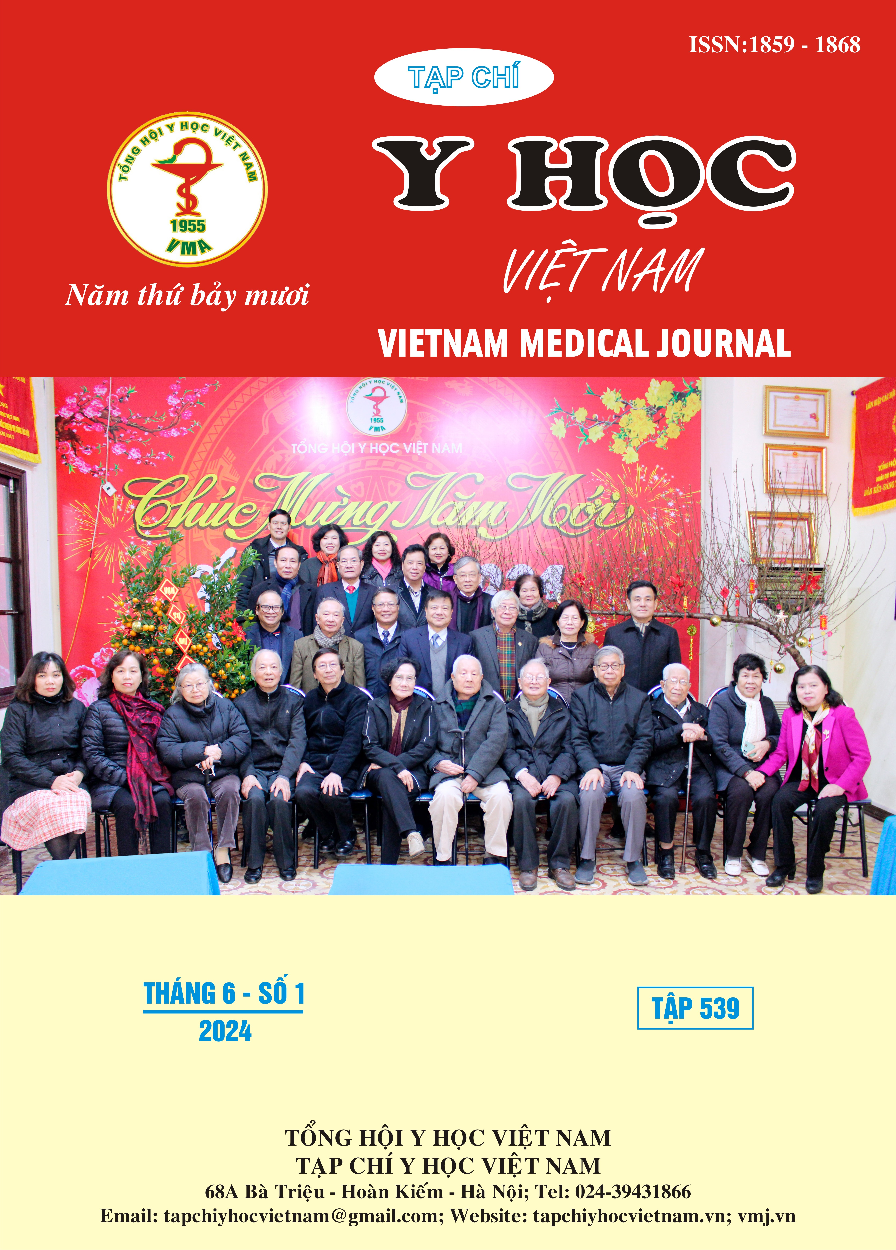CLINICAL SYMPTOMS AND IMAGED FEATURES OF DEGENERATIVE SPONDYLOLISTHESIS IN THE PATIENTS WITH DIABETES TYPE II
Main Article Content
Abstract
Introductions: In Vietnam, to the best our knowledge, there are very few studies about clinical and imaging characteristics of degenerative lumbar spondylolisthesis in patients with type II diabetes.The objective of this study is to describe both clinical and imaged features of such patients. Material and methods: Retrospective study was performed in 40 patients with diabetes type II who were diagnosed degenerative lumbar spondylolistheis at out-patient department of 108th Military Central Hospital, from 6/2018 to 6/2020. Results: The mean age of the patients was 63.3 ± 7.1, with 60% females. 100% of the patients had low back pain with meam VAS was 6.0 ± 1.5 and 92.5% of patients had radicular pain of lower extremities, 87.5% had intermittent neurogenic claudication; Patients had motor deficit of the lower extremities in 17.5%, bladder disorder in 4 patients (10%), positive lasègue test in 16 patients (40%), decreased or absent tendon reflexes of lower extremities in 19 patients (47.5%). 100% of patients were grade I of spondylolisthesis, the most common level was L4-5 accounting for 37.5%, 11 patients had lumbar spinal scoliosis. All patients had grade V disc degeneration according to Pfirmann’s classification. 100% of patients have disc degeneration at level V according to Pfirrmann's classification on magnetic resonance imaging. The group of patients had diabetes type II from 1 to 5 years accounted for the highest proportion with 40% (16 patients), the mean duration was 4.4 ± 2.7 years. Conclusions: Type II diabetic patients with degenerative lumbar spondylolisthesis were usually at an advanced age, all have symptoms of low back pain and or symptoms of nerve compression. On X-ray, all patients had grade I of spondylolisthesis, could be seen lumbar scoliosis on X-ray. magnetic resonance imaging showed severe disc degeneration.
Article Details
Keywords
Spondilolisthesis, diabetes, lumbar sacral region
References
2. Salazar JJ, Ennis WJ, Koh TJ (2016), “Diabetes medications: Impact on inflammation and wound healing”, Journal of Diabetes and its Complications, 30(4), 746-752.
3. Koslosky, E, Gendelberg, D. (2020). Classification in Brief: The Meyerding Classification System of Spondylolisthesis. Clinical orthopaedics and related research, 478(5), 1125–1130.
4. Pfirrmann CW, Metzdorf A, Zanetti M, et al (2001). Magnetic resonance classification of lumbar intervertebral disc degeneration. Spine (Phila Pa 1976). 1;26(17):1873-8
5. Nguyễn Vũ (2016), Nghiên cứu điều trị TĐS thắt lưng bằng phương pháp cố định cột sống qua cuống kết hợp hàn xương liên thân đốt, Luận án Tiến sĩ Y học, Đại Học Y Hà Nội, Hà Nội.
6. Refaat, M.I. (2014). Management of Single Level Lumbar Degenerative Spondylolisthesis: Decompression Alone or Decompression and Fusion. Egyptian Journal of Neurosurgery. Volume 29, No. 4: 51-56.
7. Võ Văn Thanh (2014), Kết quả điều trị trượt đốt sống thắt lưng L4-L5 bằng phẫu thuật lấy đĩa đệm, cố định cột sống, ghép xương liên thân đốt, Luận Văn Bác sĩ nội trú, Đại Học Y Hà Nội, Hà Nội.
8. Pasha, IF, Qureshi, MA, Haideret IZ, al (2012), “Surgical treatment in lumbar spondylolisthesis: experience with 45 patients”, J Ayub Med Coll Abbottabad, 24(1), 75-8.


